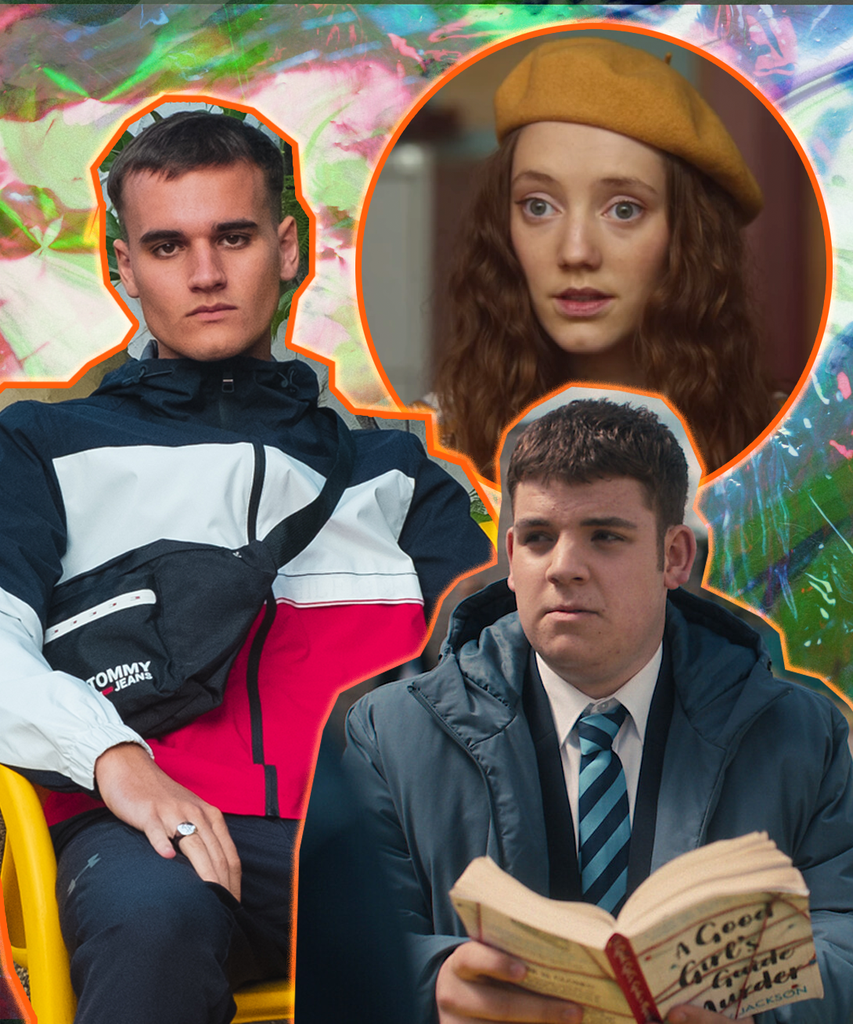
Quick: Think of an asexual character.
Got one?
Okay, so what are the odds it’s either Isaac Henderson from Heartstopper, Todd Chavez from BoJack Horseman or Ca$h from Heartbreak High? I’d say it’s pretty damn likely you chose one of those three. But what do these characters have anything in common, other than being asexual?
In recent years, all three have been the standout asexual characters on mainstream television (and interestingly enough, all three series are Netflix originals). These characters are near and dear to me, and I am immensely grateful that they exist — and that these series are showcasing the asexual experience for mainstream audiences. However, I cannot help but notice that all of these characters identify as male.
There are very few examples of female-identifying characters that are on the asexual spectrum (and even fewer who are non-binary or gender nonconforming). Florence from Sex Education is often the character most people refer to when I bring up this issue. But while I love the discussions that were raised with Florence’s story arc, I was deeply disappointed that she only made three appearances in the show. Sex Education is a show that prides itself for creating groundbreaking queer content, but it was not lost on me that the only asexual character had a single episode focusing on her sexual identity, and nothing more came from her narrative arc (unlike many other supporting characters that are woven in throughout the plot for multiple seasons).
So why are onscreen depictions of asexual women so scarce?
I wholeheartedly believe that this dearth of representation is a product of the male gaze. Sexuality is intrinsically tied to ideas of femininity and womanhood due to the patriarchy’s hyper-sexualisation of women. A woman being devoid of the desire for sex, therefore, is an anomaly in media because the (mostly straight) white cishet men who run the entertainment industry don’t tend to promote any identity and lifestyle that is in direct opposition to the heteronormative standards upheld by society.
The absolute deficit of non-male asexual characters is just another prime example of how the patriarchy is still prevalent in queer narratives.
This is reminiscent of how in the 90s and 2000s when positive onscreen depictions of allosexual queer people (lesbians, gay men, bisexual people etc) were mainly white cis men. From Will and Grace to Glee and Modern Family, queerness was a lot more palatable and marketable to audiences if those relationships were centred around white men. With few exceptions, queer women’s narratives were mostly pushed aside and are still far less common than gay narratives today. According to the GLAAD Where We Are on TV 2022-2023 Report, out of all LGBTQ characters on television, there were 30 fewer lesbian characters than gay characters in the 2022-23 TV season. The same report found that only 1% of LGBTQ characters were asexual. If a show is presenting an alternative to traditional gender expectations and living a life divorced from the male gaze, does this threaten men’s control and power over women?
Another key aspect of this erasure is undoubtedly due to the age-old notion that “sex sells”. Asexuality, of course defies that idea, as you cannot market something that a person is lacking. When asexual women are not deemed as marketable and their stories are considered not to be worthwhile, that just further proves that the entertainment industry believes sex is one of the core tenets of a woman’s worth.
The absolute deficit of non-male asexual characters is just another prime example of how the patriarchy is still prevalent in queer narratives. I adore that Ca$h’s storyline in Heartbreak High made me feel more confident in saying that I am asexual. I am indebted to Todd Chavez from BoJack Horseman for giving myself and others the vocabulary we needed to understand this vital part of ourselves. I love that through Isaac’s arc in Season 2 of Heartstopper, asexuality is going to be more widely understood and normalised in the younger generation. These three mainstream storylines from major characters are all revolutionary in destigmatising and starting conversations about asexuality, and I am thankful that they exist.

However, I cannot help but be disappointed that thus far, women have largely been excluded from narratives about asexuality. A woman’s sex appeal should not be tied directly to how worthy her story is of being told, as women have far more to offer than sex.
I am optimistic that in the next few years we will get a wave of gender-diverse (as well as racially, ethnically, ability diverse) asexual characters. But until that day comes, I will be championing the small amount of asexual representation that we get to see, and dreaming about the day when it’s commonplace, widely known and accepted. That future can’t come soon enough, because I’m excited for our stories to finally be told.
Like what you see? How about some more R29 goodness, right here?
Heartbreak High Is Aussie Answer To Sex Education